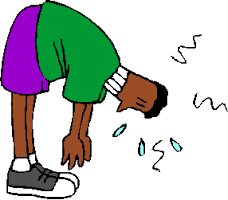What is mathematics?
Though this question is impossible to summarise in a few words, these were my responses to this question from today’s input:
“mathematics is solving problems with numbers”
“mathematics is universal”
“mathematics is everywhere” (This was proven to us by being tasked to highlight in a newspaper wherever we saw maths. The yellow highlight strewn across the front page was evidence enough).
Maths anxiety is not something I believe I have, however, being informed in our lecture that in order to be numerate, you must not only understand the mathematics you are doing, you must be able to explain your thinking. If I was confident in my own ability to do a maths problem and was put on the spot to show how I did it, I think I would feel immense pressure and embarrassment in case I was wrong. Showing me there can always be doubt and fear.
Before my first year school placement I felt confident about teaching mathematics and felt I had an understanding of the basics at least. Maths is a subject I enjoyed and was good at, at school until Higher level – but that’s a different story and I won’t go there now. However, during my placement, I taught an extensive amount of mathematics. During one lesson I won’t forget, I had a really tough time helping a small group understand the lesson objective. Repeatedly breaking down the success criteria for the children but this group just weren’t getting it. I thought the way I was explaining it was simple enough however saying it over and over again did not work. I realised the problem lay with me and my inability to explain it in a different way. Therefore, my confidence in my own ability plummeted.
The example above is why I am glad I chose this elective module as I need to better understand mathematical concepts, to improve not only my competence but re-build my confidence in a subject that I enjoy.
Our lecture on “what is maths? Why teach it?” was really interesting and dare I say fun! The task to work out how many snaps to break up a bar chocolate with 64 squares brought about many things which are so important to exploring maths: discussion, conversation, sharing language and most importantly, play. We were able to visualise and draw connections from this task to help us and we had help with props too.
I think we have got off to a great start in not only understanding but actually doing what mathematicians do. In the lecture we did all of the following without even realising it:
- solve problems
- investigate
- explore
- discover
- use symbols, tables and diagrams
- collaborate
Another task was to discuss which way we would calculate this problem:
“In a warehouse you can obtain 15% discount but you must pay 20% VAT. Which way would you prefer your final bill to be calculated: with discount first or with VAT first?”
I first dove in with working out the answer doing 15% off first then 20% VAT and vice versa and was not surprised to find that both answers were the same. It was interesting to hear other people’s ideas that the reasoning behind perhaps adding the VAT first was that so there was a greater number therefore when it came to the 15% discount there would be more money off. This was a great task to see how other people’s mind worked as, as I said I just dove straight in, however, others had more logical thinking, albeit the answers were the same, it shows that no two minds think alike.








